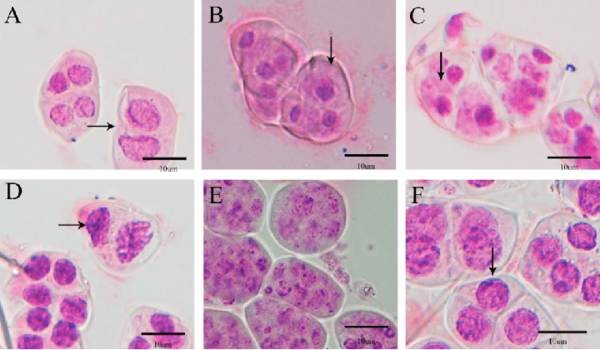The induction of 2n pollen is an important technique for breeding polyploid plants. Here, observed meiosis in the pollen mother cells (PMCs) of six Phalaenopsis cultivars and attempted to induce 2n pollen.

The meiotic stage was related to flower bud length. During meiosis, Phalaenopsis cultivars with flower widths of approximately 20–40 mm and 50–60 mm had bud lengths of approximately 3–8 mm and 5–13 mm, respectively. The duration of meiosis ranged from 4.2 to 14 d. This was the first study to characterize meiosis of the PMCs of Phalaenopsis. The natural generation frequency of 2n pollen varied from 0.68% to 1.78%.
The meiotic stage and colchicine concentration significantly affected the induction of 2n pollen. The most effective treatment for obtaining 2n pollen was 0.05% colchicine in the leptotene to zygotene stage for 3 d, which achieved a 2n pollen frequency of 10.04%.
Read the complete research at: www.researchgate.net
Wu, Ting & Zhao, Xin & Yang, Shuhua & Yang, Jiahui & Zhu, Jun & Kou, Ya & Yu, Xiaonan & Ge, Hong & Jia, Ruidong. (2022). Induction of 2n pollen with colchicine during microsporogenesis in Phalaenopsis. Breeding Science. 10.1270/jsbbs.21100.
